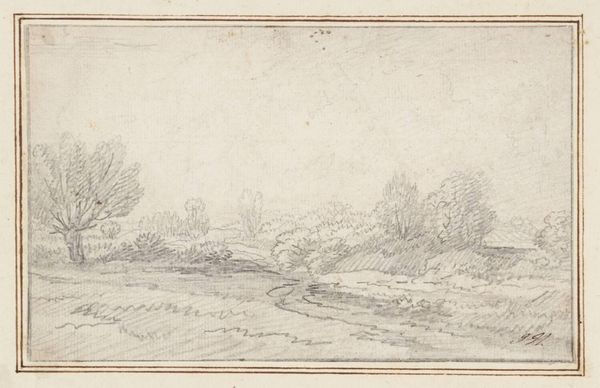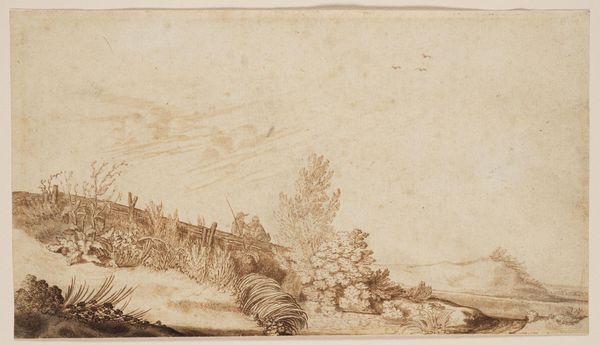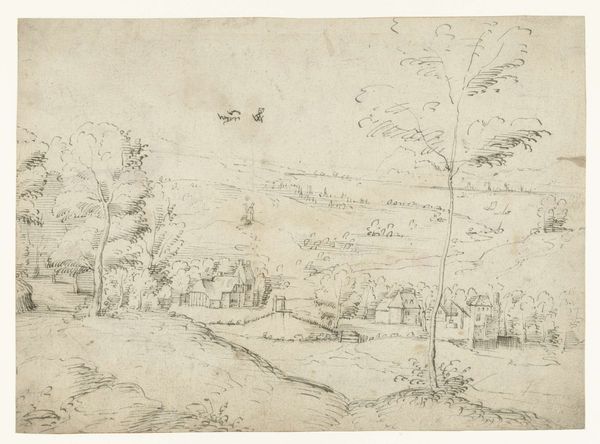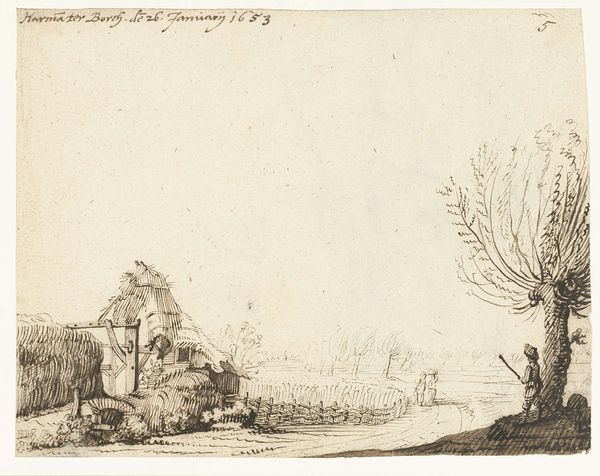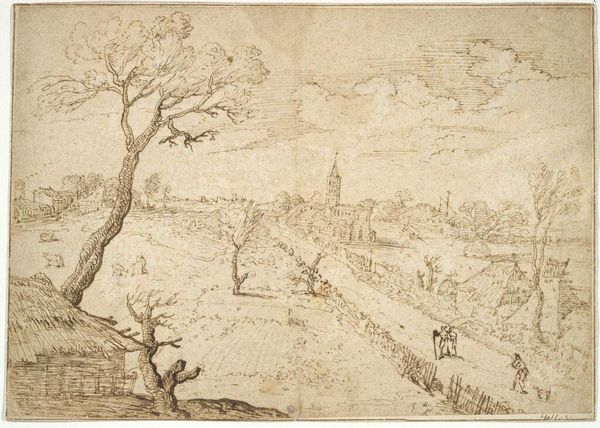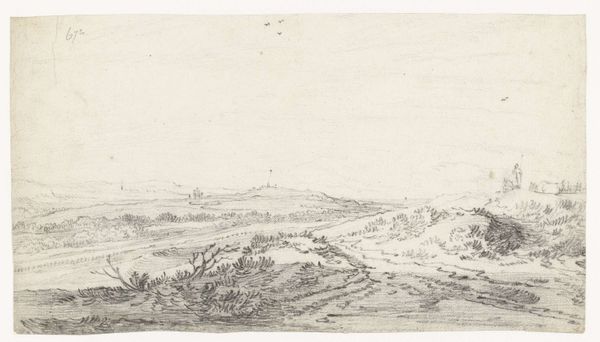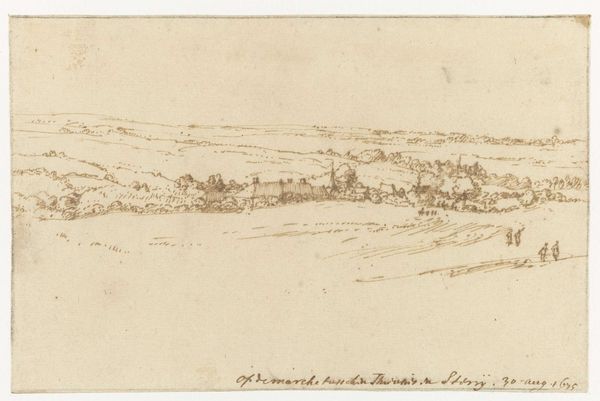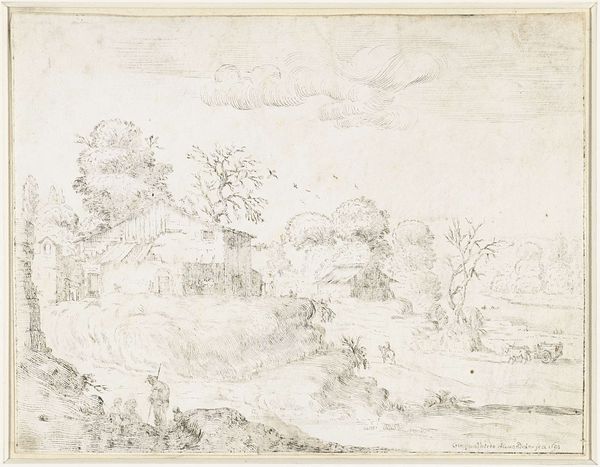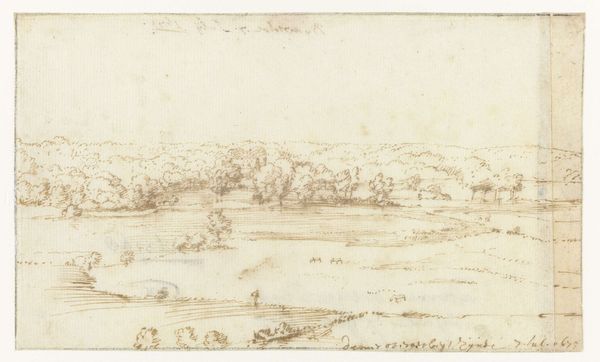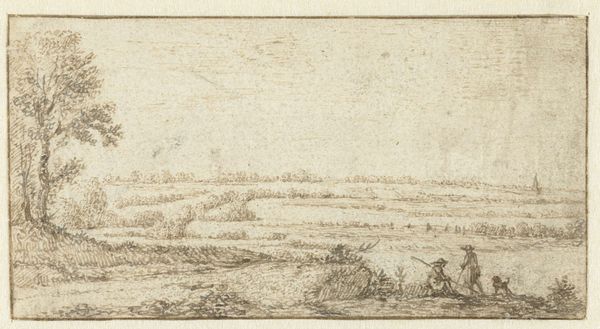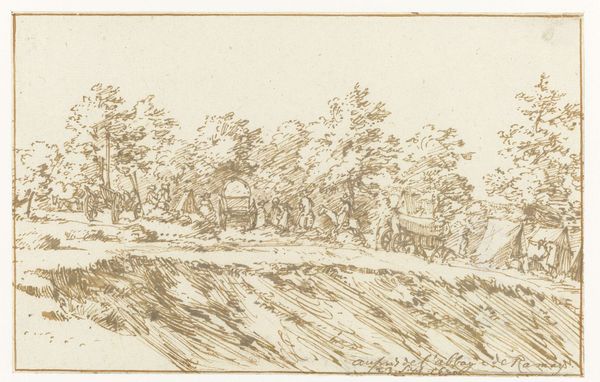
drawing, pencil
#
drawing
#
landscape
#
etching
#
11_renaissance
#
pencil
Dimensions: height 62 mm, width 129 mm
Copyright: Rijks Museum: Open Domain
Editor: This delicate drawing, "Heuvelachtig landschap met kerk aan rivier," or "Hilly landscape with church on a river" by Antoni Behagle, was created sometime between 1550 and 1570 using pencil. It has such a tranquil, almost dreamlike quality. What do you see in this piece? Curator: I see a powerful statement about the relationship between humanity and the natural world during a time of great social and religious upheaval. Consider the Reformation: the role of the church was being questioned. In the landscape, the church is present, but it's nestled *within* the landscape, not dominating it. Editor: That's interesting. So the landscape is not just background. Curator: Exactly. How might we read this landscape in relation to early capitalist modes of production and resource extraction? The controlled, almost tamed elements of nature, like the cultivated hills and the river guiding travel and commerce, stand in contrast to the wilder trees. The tension between the "natural" and the "constructed" raises questions about control, access, and the early signs of environmental transformation. Editor: It makes me wonder, who had access to that land, and who was excluded? The artist has very deliberately presented both cultivated and uncultivated elements. Curator: Precisely. It encourages us to look closer at who benefits from that relationship and to ask: who gets to experience the beauty and resources of this world, and at what cost? It provides us with a nuanced portrayal of the times. Editor: This has definitely changed how I will view landscapes from now on. Curator: It is more than just pretty scenery; it mirrors our ever-evolving dialogue with the planet.
Comments
No comments
Be the first to comment and join the conversation on the ultimate creative platform.
